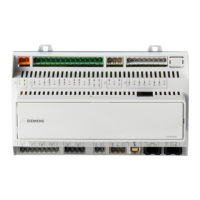Detailed Description
2.2 Homing /synchronizing
Basic logic functions: Spindles (S1)
Function Manual, 11/2006, 6FC5397-0BP10-2BA0
35
Special features for synchronization with BERO
The position falsification caused by the signal delay with BERO can be corrected internally in
the NC by entering a signal runtime compensation.
In machine data:
MD31122 $MA_BERO_DELAY_TIME_PLUS
or
MD31123 $MA_BERO_DELAY_TIME_MINUS
a signal runtime compensation (dead time) for positive or negative movement direction is
entered in connection with the following machine data setting:
MD34200 $MA_ENC_REFP_MODE = 2 or 7
.
• Setting:
MD34200 $MA_ENC_REFP_MODE = 7
executes position synchronization only at a fixed velocity/speed defined in machine data:
MD34040 $MA_REFP_VELO_SEARCH_MARKER
.
The velocity defined in machine data:
MD34040 $MA_REFP_VELO_SEARCH_MARKER
is also effective when homing in operating mode JOG-REF and through the part program
with G74.
• Setting:
MD34200 $MA_ENC_REFP_MODE = 2
executes position synchronization without specifying a specific velocity/speed.
Note
The overriding of the signal propagation delay by the NC requires the use of type
611D drives.
Signal propagation delays are preset on delivery so that the content generally does not
have to be changed.
Homing sequence
If the spindle is to be programmed in axis mode directly after control power up, it must be
ensured that the axis is homed.
When the control is switched on, the spindle can be homed (condition is one zero mark per
revolution).
For information on operation of referencing see:
Literature:
/FB1/ functions manual Basic Functions; Reference Point Approach (R1)
The rotary axis is homed at the same time as the spindle is synchronized (see
Synchronization procedure) if the position measurement system used for the spindle is also
used for the rotary axis.

